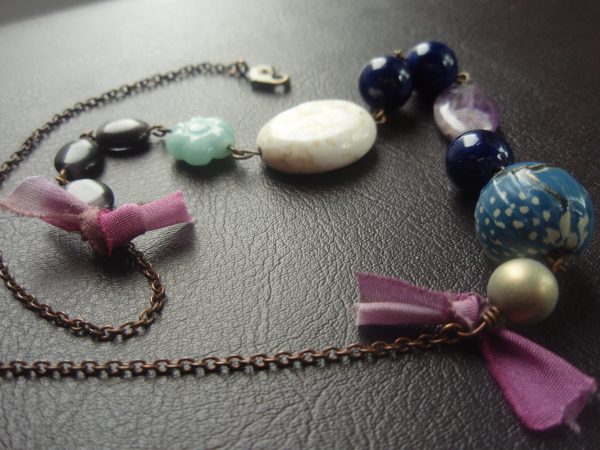Arts & Crafts
THESE ARE 10 AMAZING REASONS TO MAKE YOUR OWN JEWELRY

DIY jewellery creation is a terrific hobby that anyone can participate in. Whether you’re looking for a new pastime to help you connect with your creative side or you used to make jewellery but haven’t in a long time, you might need a little prodding to get started (again).
Here are seven good reasons to design your own jewellery.
10 GOOD REASONS TO MAKE YOUR OWN JEWELRY
1. IT IS NOT EXPENSIVE TO START
To begin started manufacturing and make jewelry, you don’t have to go all out and spend a lot of money. In reality, you can get away with less expensive materials. Simply upgrade as you gain experience and realise that jewelry-making is something you wish to pursue.
For novices, I’ve compiled a list of important tools.
2. MAKE YOUR OWN JEWELRY TO SAVE MONEY
Who doesn’t want to save money?
Well, it just so happens that making jewellery at home can save you a lot of money.
Here are some strategies to save money while making your own jewellery:
- You don’t have to pay the markups that retail jewellery stores do.
- Even more money can be saved by purchasing in bulk goods that you enjoy and use frequently.
- Purchase beading supplies directly from a supplier to avoid the middleman.
- There are a lot of online-only bead shops that can save you money because they don’t mark up their items to offset the costs of typical brick and mortar businesses.
3. EARN MONEY BY MAKING YOUR OWN JEWELRY
You can turn your jewelry-making passion into a little or major business. You can make some extra money or make your craft your sole source of income.
Many jewellery designers begin by creating something for themselves. Then, when people notice the jewellery and inquire about where they obtained it, they realise they can sell it and make some money.

4. EXPRESS YOUR UNIQUE PERSONALITY
Every person on our earth is unique, and some of us have distinct tastes in fashion. If you’re one of those people who can’t seem to find what they’re looking for, make it!
You won’t have to rely on others to create something you want if you learn how to design your own make jewelry. You can grab your supplies at any time and create a masterpiece.
5. MAKE YOURSELF UNIQUE
This one is related to the last reason for making your own jewellery, which is to be unique. You don’t like cookie-cutter products? Simply put, you should produce your own stuff.
When crafting jewellery, you can be as creative as you want. Use bright colours, designs, or a medium that isn’t commonly seen in jewellery.
Do you think so?
6. THERE ARE BUILT-IN BRAGGING RIGHTS
That’s true, I’ll confess it.
When someone compliments my handmade jewellery and inquires about where I obtained it, it’s always fun to respond, “I made this!” It never ceases to amaze me.

When you make your own jewellery, you may also brag about it.
You’ve earned it.
7. YOU DON’T REQUIRE A LOT OF ROOM
One of the best things about crafting jewellery at home is this. You don’t require a large amount of area. Because beads and mostly make jewelry supplies are small, they don’t take up a lot of room unless you go wild and buy a lot of them.
When not in use, all you need is a tiny area of a room or a closet to store your beading supplies. Take only what you need and sit at your dining room table or in your favourite chair in front of the television when you’re actually making.
To keep your beads and tools organised, try these inventive bead storage ideas.
8. ENJOY AND RELAX
Making your own jewellery is both peaceful and enjoyable. You get to relax and unwind while creating something lovely. What could be better?
9. PRESENT THOUGHTFUL GIFT IDEAS
Giving a gift of handmade jewellery is a kind gesture. Spending the time to make something with your own two hands for someone else shows them how much you care.
Why?
Because…
- Certain forms of jewellery can take a long time to produce because you had to think about what to make in the first place.
- Then you took the time to customise it to their individual tastes and styles, such as the colours utilised, the materials used, and so on.
10. ESTABLISH RELATIONSHIPS WITH OTHERS
Learning to make your own jewellery allows you to connect with other makers who share your passion. You can enrol in classes and online groups where you’ll meet folks who share your enthusiasm for jewelry-making.
It’s a terrific method to blend in and feel like you belong, something everyone secretly desires.
So, if you’re looking for a little push, these ten reasons should be more than enough to get you started designing your own jewellery in no time. It is unquestionably worthy.

